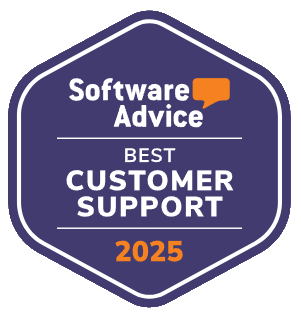Today’s support leaders know that the right tech stack makes or breaks service delivery. When teams are juggling rising ticket volumes, complex SLAs, and sky-high customer expectations, efficiency becomes the name of the game.
This guide breaks down the most impactful categories of support tools—ticketing, AI automation, collaboration platforms, self-service systems, and more.
Support teams in both small and large organizations can use these tools to:
✔ Reduce friction in daily workflows
✔ Improve first response time
✔ Boost overall agent productivity
Each section is organized by core function and includes implementation advice, integration tips, and the operational outcomes that matter most.
Ticketing Systems
Ticketing platforms are the backbone of customer support. They organize incoming requests, enforce SLA compliance, and assign tickets based on urgency and expertise. With helpdesk automation tools, teams can reduce manual triage and speed up resolution.
What Makes Them Effective
The most reliable ticketing systems provide omnichannel support—email, chat, phone, and social media—under one roof. Built-in SLA rules and escalation workflows help keep teams accountable and ensure no ticket is missed.
Automation rules handle ticket categorization, prioritization, and routing so agents can focus on resolving issues, not sorting them.
Top Tools
Zendesk: Brings all your support channels—email, chat, phone, and social—into one centralized system. Offers SLA tracking, automated routing, and a user-friendly interface designed for responsiveness.
Freshdesk: Automates repetitive tasks, delivers actionable insights, and unifies communication channels. Its feature-rich ecosystem improves both agent productivity and customer experience.
HelpDesk: Supports omnichannel ticket management with built-in SLA tracking and automated escalations. Internal collaboration tools and smart routing features help streamline workflows and enhance service quality.
Operational Impact
A well-implemented ticketing system can reduce first response time (FRT), increase the number of tickets handled per agent, and improve customer satisfaction. It also supports scale—letting teams manage higher volumes without sacrificing quality.

AI-Powered Tools and Chatbots
AI tools are becoming foundational to modern support operations. From triaging tickets to generating summaries, they reduce agent workload and improve both speed and accuracy in responses.
What They Do Best
These systems automate repetitive tasks and assist with:
- Ticket categorization and routing
- Sentiment analysis for tone detection
- AI-generated replies based on customer history
- Issue summarization and prioritization
Top Platforms to Explore
Several tools stand out for their ability to blend seamlessly into support workflows:
- Supportbench: Offers AI-based triage, context-aware macros, and real-time response suggestions.
- Moveworks: Specializes in resolution automation through natural language understanding.
- Intercom: Uses AI to draft response suggestions and guide agents during live conversations.
Why It Matters
These tools free up agents to focus on complex issues by reducing handling time and boosting consistency in support quality. With fewer manual steps, teams experience less burnout and higher CSAT scores.
Knowledge Base and Self-Service Tools
Self-service is one of the most effective ways to reduce ticket volume and speed up customer resolution. When done right, it empowers users to find answers without waiting for agent support.
Core Capabilities That Help
Modern platforms support:
- Article suggestions tied to ticket keywords
- Searchable, user-friendly interfaces
- Structured templates for faster content updates
- Internal usage analytics to flag outdated content
Tools Worth Considering
Supportbench: Integrates a knowledge base directly with its ticketing system, allowing agents to share content instantly while also using SLA workflow automation to keep processes efficient.
Helpjuice: Simple to use with strong analytics and collaboration features, making it easy to maintain high-quality content.
Document360: Offers version control and advanced categorization—ideal for growing support teams needing structure.
What You Get in Return
A well-maintained knowledge base can cut inbound ticket volume by 20–30%. It also boosts agent efficiency by reducing repeat questions and enabling quicker resolutions through internal references.

Collaboration Platforms
Support teams rarely work in isolation. Quick, seamless collaboration with product, engineering, or legal teams often determines how fast complex issues get resolved.
These tools help
- Share real-time updates on urgent or escalated issues
- Exchange internal notes and file attachments securely
- Set up dedicated rooms or threads for major incidents
Top Platforms to Explore
Slack: Ideal for real-time, channel-based communication. Its alert integrations and file sharing features support rapid coordination for complex cases.
Microsoft Teams: Offers deep integration with the Microsoft 365 suite, enabling secure chats, video meetings, and document collaboration—all within one interface.
Threads: Built for asynchronous communication. It helps organize ongoing discussions by topic, reducing noise and keeping cross-functional teams aligned without disrupting workflow.
Why This Matters
These tools improve first-call resolution by accelerating internal responses. They reduce ticket handoff time, keep everyone on the same page, and help create a more connected support culture.
Analytics and Reporting Dashboards
Support teams can’t improve what they don’t measure. That’s why robust analytics dashboards are essential for tracking ticket volume, resolution efficiency, and customer satisfaction trends.
Key metrics to track include:
- First Response Time (FRT) – Measures how quickly agents respond to initial inquiries
- Resolution Time – Tracks the duration from ticket creation to closure
- CSAT (Customer Satisfaction Score) – Reflects the quality of service from the customer’s perspective
- Ticket Backlog – Highlights unresolved ticket accumulation
- Escalation Rate – Flags support areas that lack resolution at lower tiers
Recommended Tools
Supportbench Analytics Dashboard: Tailored for support KPIs, with real-time SLA tracking and agent performance summaries
Zoho Analytics: Connects data from multiple tools to provide unified reporting for support and operations
Power BI / Tableau: Suitable for enterprise-level reporting, enabling advanced visualizations across departments
Why This Matters
Dashboards enable data-informed decisions, from optimizing staffing to identifying recurring issues. By regularly reviewing these metrics, teams can uncover bottlenecks, prioritize improvements, and align support performance with business goals.

ITSM and ITOM Integrations
As support and IT teams increasingly converge, integrating support operations with ITSM (IT Service Management) and ITOM (IT Operations Management) systems has become essential for operational maturity.
These systems offer
- Incident Management: Tracks, escalates, and resolves issues systematically
- Change Management: Logs updates, coordinates approvals, and minimizes service disruption
- CMDB Access: Maps IT assets and configurations to support cases for faster troubleshooting
- Compliance and Audit Trails: Ensures traceability across all support-related changes
Popular ITSM Tools
ServiceNow – A robust, enterprise-grade platform that connects incident management with automation and workflows
Ivanti – Tailored for mid-sized organizations, offering customizable service desk features
BMC Helix – Leverages AI to proactively identify problems and streamline IT support operations
Why These Integrations Matter
Linking ITSM tools with your support stack improves visibility, accelerates resolution of technical issues, and ensures that infrastructure changes don’t leave customers in the dark. These platforms turn scattered support data into unified, auditable service processes—essential for scale.
Robotic Process Automation (RPA)
RPA tools help support teams eliminate repetitive, manual work—freeing up agents to focus on high-value interactions.
Here’s what RPA actually does:
- Auto-Fill CRM Fields: Extracts data from tickets and updates records without agent input
- User Provisioning: Automates onboarding or permissions updates for internal support requests
- Batch Data Sync: Keeps customer data aligned across CRMs, ERPs, and ticketing platforms
- Form Processing: Validates, formats, and routes submitted forms with no manual review
Top RPA Tools to Consider
UiPath – Offers powerful integrations and prebuilt workflows for enterprise-grade automation
Automation Anywhere – User-friendly platform with strong capabilities for backend support workflows
Microsoft Power Automate – Ideal for Microsoft 365 environments, integrates deeply with support-related tools
Why RPA Matters in Support
Support operations often rely on dozens of small, repetitive backend tasks that consume time but add no strategic value. RPA reduces handling time, minimizes errors, and ensures that key processes—like record updates and report generation—run consistently and accurately.

Implementation Tips + Estimating ROI
Adding new tools without a clear rollout plan can create more friction than results. Use this phased approach to integrate technology with purpose.
Start With Gaps, Not Features
Begin by identifying where your support system falls short—slow first responses, ticket backlog, inconsistent escalation. Prioritize these gaps based on business impact before choosing tools.
Suggested Rollout Sequence
Phase 1 – Ticketing system + knowledge base
Phase 2 – Add AI triage and performance dashboards
Phase 3 – Layer in RPA and ITSM/ITOM integrations if needed
The 4 Metrics That Prove It’s Working
- Ticket Volume Shift – Compare average weekly volume pre- and post-deployment
- Agent Handling Capacity – Monitor how many tickets each agent can now resolve per week
- CSAT Improvements – Look for gains in satisfaction scores from self-service or faster resolutions
- Time to Resolution – Track average resolution cycle length before and after changes
Example Benchmark
Equinix used Moveworks’ AI to automate IT ticket triage, achieving 96% routing accuracy and resolving 82% of tickets automatically. This led to a 33% reduction in resolution time and eliminated 4 hours of manual work per agent daily—all while maintaining a 96% CSAT.1
Final Thoughts
Support operations today require more than disconnected tools—they demand a connected system. By combining AI triage, helpdesk automation, self-service, and real-time analytics, support teams can work faster, reduce costs, and keep customers satisfied.
Supportbench helps bring that system together. Its platform supports SLA tracking, ticket workflows, analytics dashboards, and knowledge base management—all under one roof. With built-in automation and AI suggestions, it gives teams the data and tools they need to stay focused, aligned, and productive.
Choosing the right tech stack isn’t just about features. It’s about fit. Evaluate what your team needs most—faster responses, fewer tickets, clearer insights—and build your stack around those goals.















